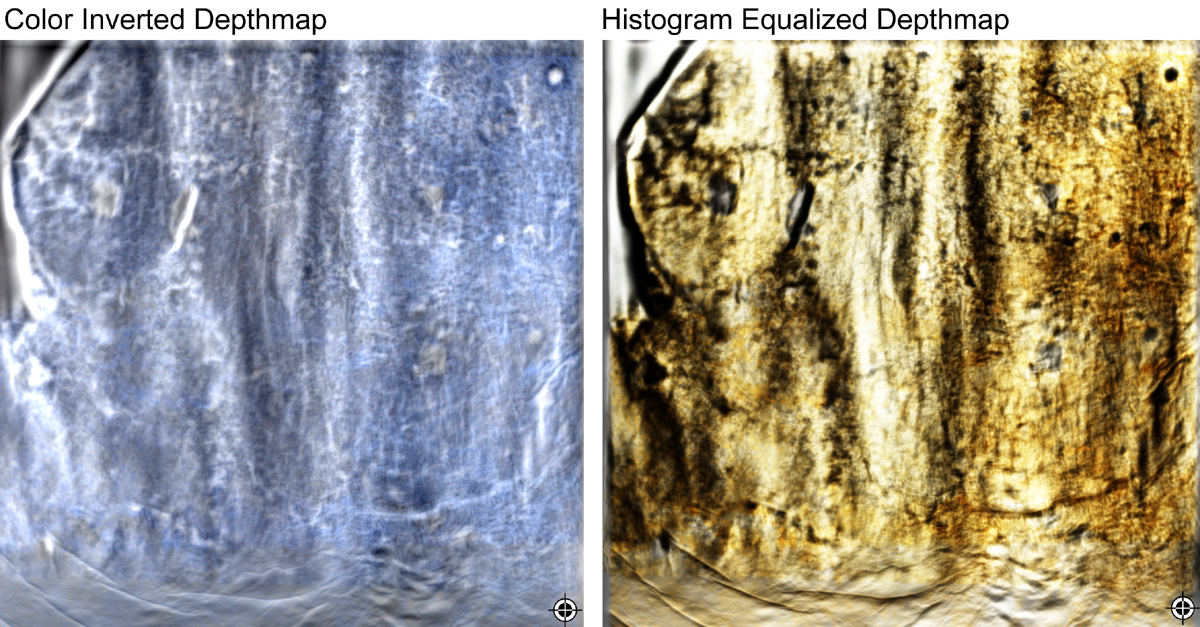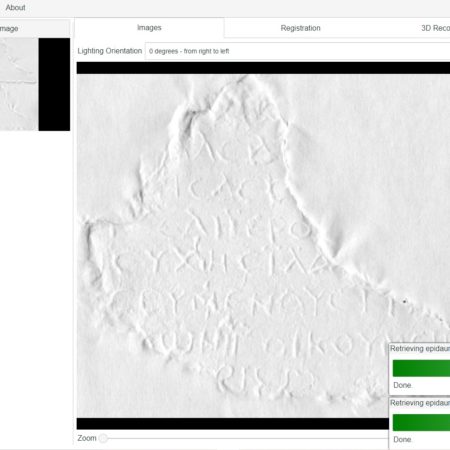Digitization of inscriptions from the Aleshire collection
June 3, 2015.
An interdisciplinary team from the Digital Epigraphy and Archaeology group at the University of Florida and the Aleshire Center for the Study of Greek Epigraphy at the University of California, Berkeley digitized in 3D squeezes (paper casts) of inscriptions from the Aleshire collection. The goal of this pilot project was to stretch the shape-from-shading (SFS) method of the Digital Epigraphy Toolbox to its limits by testing it to severely weathered inscriptions from Thebes and Sifnos.
Description
GAINESVILLE, Fla.
June 3, 2015.
An interdisciplinary team from the Digital Epigraphy and Archaeology group at the University of Florida and the Aleshire Center for the Study of Greek Epigraphy at the University of California, Berkeley digitized in 3D squeezes (paper casts) of inscriptions from the Aleshire collection. The goal of this pilot project was to stretch the shape-from-shading (SFS) method1 of the Digital Epigraphy Toolbox2 to its limits by testing it to severely weathered inscriptions from Thebes and Sifnos.
SFS has been successfully used in the past by our group for 3D digitization of inscriptions from the Monumentum Ancyranum (in collaboration with Cornell University), seals and medals (in collaboration with the UK National Archives), paper embossments from Abraham Lincoln’s letters (in collaboration with the Library of Congress and Cornell University) and most recently inscriptions from Delphi, Thasos, and Delos (in collaboration with the University of Lyon 2 and the French School of Athens).
The question to be answered in this pilot project was: Can SFS assist epigraphists in reading severely weathered inscriptions by intensifying the inscribed symbols or even reveal new fragments?
To find the answer to this question, Prof. Nikolaos Papazarkadas and John Lanier (UC Berkeley) selected three sample squeezes with hard-to-read inscribed fragments and scanned them, using a regular flatbed scanner (Expression 10000XL by EPSON). Each fragment was scanned four times by rotating the squeeze 90 degrees each time, according to the SFS process1. An example of the obtained results is shown in the figures below.

Figure 1. Left: One of the original scanned images of a squeeze from a severely weathered inscription. Right: The depthmap of the 3D reconstructed inscription that reveals several rows of inscribed characters.

Figure 2. Different visualizations of the depthmap from Fig.1(right) that intensify different details of the 3D reconstructed model. Left: Color inverted depthmap. Right: Histogram equalized depthmap.

Figure 3. Left: One of the original scanned images of a squeeze from a severely weathered inscription. Right: The 3D reconstructed depthmap computed by the SFS method from the Digital Epigraphy Toolbox.
Below you can find another example of an embedded 3D digitized squeeze from the Aleshire collection. Use your touch screen or mouse to interact with the exhibit. You can rotate, zoom, relight and view in full screen information about this inscription.
Figure 3 (touch/mouse interactive). The 3D reconstructed model of the Greek Column IG I3 475 from the Aleshire collection of squeezes at UC Berkeley.
To learn more about how to use our open-access tools to digitize, analyze, and disseminate your own collection feel free to contact us or visit the web-site of the Digital Epigraphy and Archaeology project.
The DEA editorial team
References:
1. A. Barmpoutis, E. Bozia, R. S. Wagman, “A novel framework for 3D reconstruction and analysis of ancient inscriptions”, Journal of Machine Vision and Applications
2010, Vol. 21(6), pp. 989-998. PDF
2. Digital Epigraphy Toolbox, www.digitalepigraphy.org/legacy/toolbox.
Funded in part by the NEH grant HD-51214-11.





